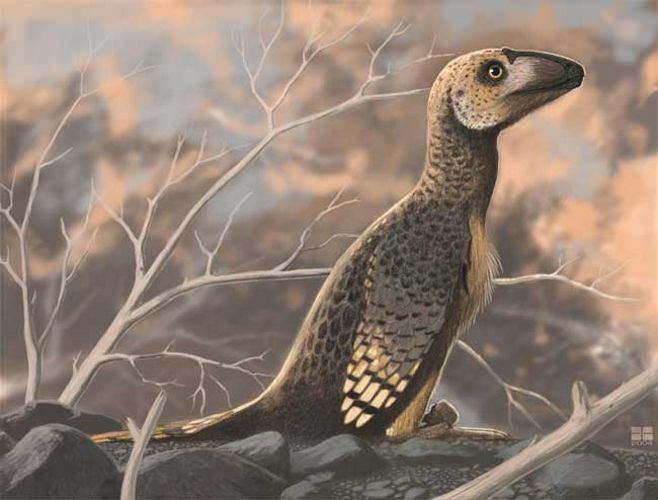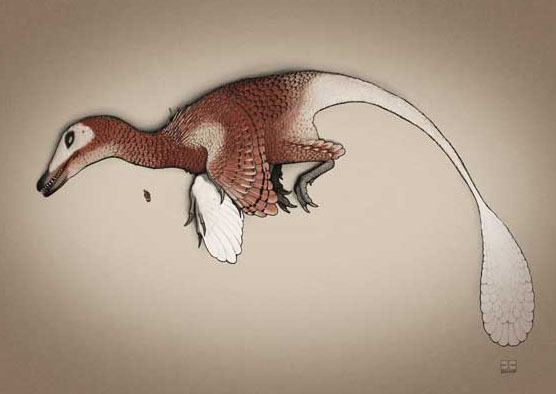| Location: Home > Research > Research Progress |
| Dinosaurs Had Bird-like Wrists |
|
Dr. Corwin Sullivan, a postdoctoral fellow from Canada, who is working at the Institute of Vertebrate Paleontology and Paleoanthropology, Chinese Academy of Sciences (IVPP), and his collaborators at IVPP,found the predatory dinosaur Deinonychus had feathered arms that worked just like a bird! Their paper was published in Proceedings of Royal Society B online 3 March 2010.
Birds are most known for their feathers, wings and toothless beaks, but another distinctive feature is a wrist joint that is extremely flexible, although only in one direction. A bird can bend its wrist to the point where the side of the hand where the little finger would be can lie closely alongside the forearm, so any fingertips would point back almost towards the elbow, but the wrist cannot bend in the opposite direction, nor even fully straighten.  Effect of abduction through angle of 60°in the dromaeosaurid Microraptor gui: (a) whole-body reconstruction showing
the position of the left-hand relative to the body in straight (black) and abducted (grey) configurations; (b) left wrist in anatomically dorsal view, showing carpus in straight (left) and abducted (right) configurations. Dr. Corwin Sullivan and his collaborators, made measurement of the radiale angle. The reconstruction of ancestral states using squared-change parsimony shows that the angle was small (15°) in primitive coelurosaurs but considerably larger (25°) in primitive maniraptorans, indicating that the radiale was more wedge-shaped and the carpal joint more asymmetric. The radiale angle progressively increased still further within Maniraptora, with concurrent elongation of the forelimb feathers and the forelimb itself. Carpal asymmetry would have permitted avian-like folding of the forelimb in order to protect the plumage, an early advantage of the flexible, asymmetric wrist inherited by birds.  The predatory dinosaur Deinonychus, a close relative of birds, had feathered arms folded back in a wing-like manner(by John Conway)
“...Dinosaurs such as Velociraptor might have partly folded their feathered arms to protect such plumage from harm’s way, and it is clear that wing-folding, or at least feathered arm folding, significantly preceded flight,” explained Dr. Corwin Sullivan, “This pattern of flexibility originally evolved in a terrestrial context and just happened to be present and available for use when birds took to the air.”  This artist's rendition of the small predatory dinosaur Velociraptor, a close relative of birds, shows the feathered arm partly folded at the wrist. Credit—— John Conway This discovery highlights the fact “that some characteristics that biologists used to think of as distinctively avian — feathers and air sacs are other good examples — are actually quite deeply rooted in theropod evolution,” added Sullivan. |